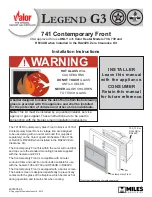
4115102
Rev 1.1
February 21, 2014
17
Customer Process Guidelines
SMT Assembly Process
Warning:
It is recommended to have a GROUND area under the Snap-in socket. This ground area should
be a whole area of copper with proper ground vias to provide a good grounding system between
the application and the embedded module and improved thermal dissipation. It should be covered
by solder resist on the non-soldered area.
The ground vias may be micro-vias, filled or unfilled.
It is recommended to leave a component-free area of 2 mm around the Snap-in socket unit.
The recommended manufacturing tolerance for the copper pad is
30
µ
m.
4.3.
Solder Mask
The pads on the printed circuit board are either Solder Mask Defined (SMD) or Non Solder Mask
Defined (NSMD).
Since the copper etching process has tighter control than solder masking process, NSMD pads are
preferred over SMD pads.
Moreover, NSMD pads with solder mask opening larger than the metal pad size also improve the
reliability of solder joints, as this limits the stress concentration at the solder-to mask corner interface.
For the external pads, the solder mask opening should be 100
µ
m to 150
µ
m larger than the pad,
resulting in 50
µ
m to 75
µ
m clearance between the copper pad and solder mask. This allows for
solder mask registration tolerances, depending upon the PCB fabricator's capabilities.
For the ground pads, SMD should be used as a ground area is recommended under the AirPrime HL
Series module.











































